Sulphur Crested Cockatoo

The Sulphur Crested Cockatoo (Cacatua galerita) is a relatively large white Cockatoo found in wooded habitats in Australia and New Guinea and some of the islands of Indonesia. They can be locally very numerous, leading to them sometimes being considered pests. A highly intelligent bird, they are well known in aviculture, although they can be demanding pets.
Within Australia, Sulphur Crested Cockatoo of the nominate race have also been introduced to Perth, which is far outside the natural range. Outside Australia, they have been introduced to Singapore, where their numbers have been estimated to be between 500 and 2000. They have also been introduced to Palau and New Zealand. In New Zealand, the introduced populations may number less than 1000. This species has also been recorded as established in Hawaii and from various islands in Wallacea (e.g. Kai Islands and Ambon), but it is unclear if it has managed to become established there they are also native to Australia.

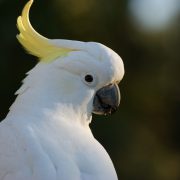

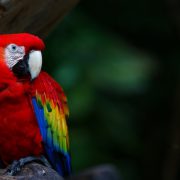
 The Red and Green Macaw (Ara chloropterus), also known as the Green Winged Macaw, is a large, mostly-red macaw of the Ara genus. This is the largest of the Ara genus, widespread in the forests and woodlands of northern and central South America. However, in common with other macaws, in recent years there has been a marked decline in its numbers due to habitat loss and illegal capture for the parrot trade.
The Red and Green Macaw (Ara chloropterus), also known as the Green Winged Macaw, is a large, mostly-red macaw of the Ara genus. This is the largest of the Ara genus, widespread in the forests and woodlands of northern and central South America. However, in common with other macaws, in recent years there has been a marked decline in its numbers due to habitat loss and illegal capture for the parrot trade.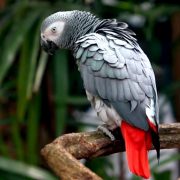

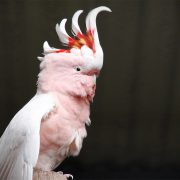
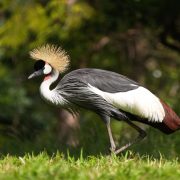
 The Grey Crowned Crane (Balearica regulorum) is a bird in the crane family Gruidae. It is found in eastern and southern Africa, and is the national bird of Uganda. This species and the black-crowned crane are the only cranes that can roost in trees, because of a long hind toe that can grasp branches. This trait is assumed to be an ancestral trait among the cranes, which has been lost in the other subfamily. Crowned cranes also lack a coiled trachea and have loose plumage compared to the other cranes.
The Grey Crowned Crane (Balearica regulorum) is a bird in the crane family Gruidae. It is found in eastern and southern Africa, and is the national bird of Uganda. This species and the black-crowned crane are the only cranes that can roost in trees, because of a long hind toe that can grasp branches. This trait is assumed to be an ancestral trait among the cranes, which has been lost in the other subfamily. Crowned cranes also lack a coiled trachea and have loose plumage compared to the other cranes.

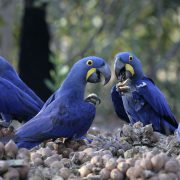
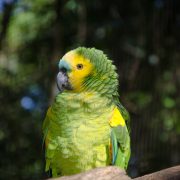
 Blue Fronted Amazon parrots are among the most common birds kept as pets, and despite the name are a bright lime green. Also known as the Turquoise Fronted Amazon or simply the Blue Fronted Parrot, these birds are normally between 15 and 17 inches long from the beak to the tip of the tail feathers.
Blue Fronted Amazon parrots are among the most common birds kept as pets, and despite the name are a bright lime green. Also known as the Turquoise Fronted Amazon or simply the Blue Fronted Parrot, these birds are normally between 15 and 17 inches long from the beak to the tip of the tail feathers.